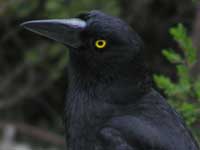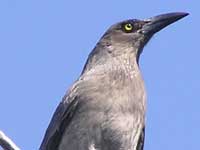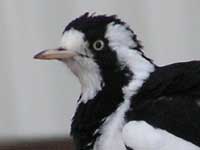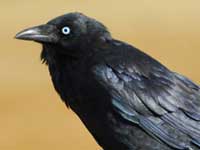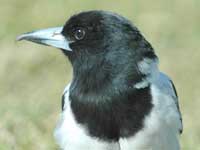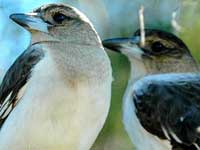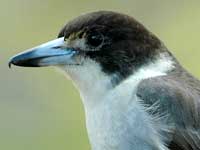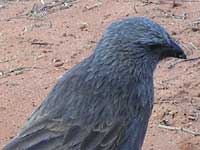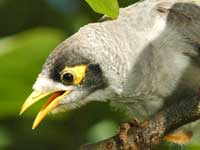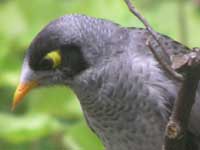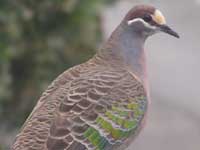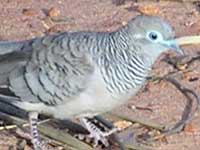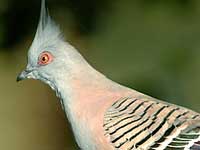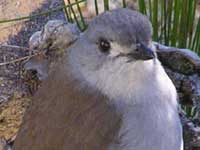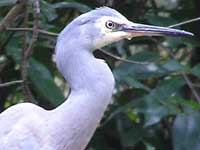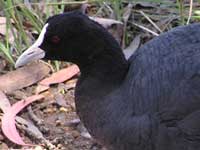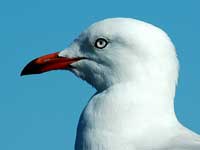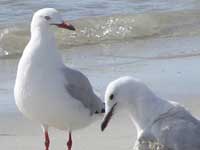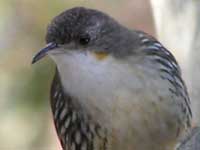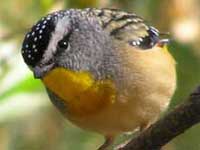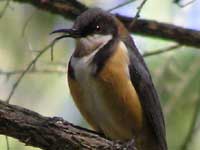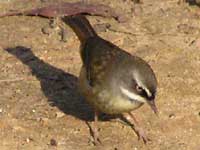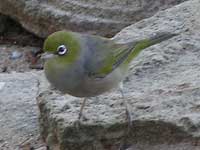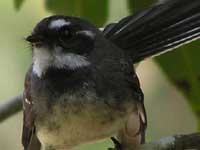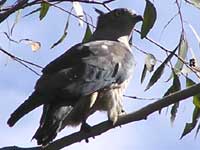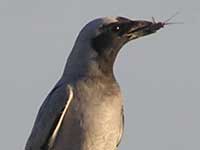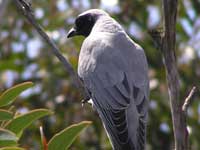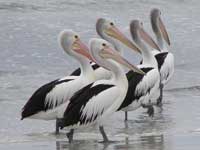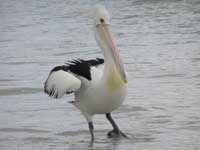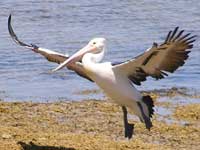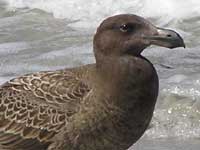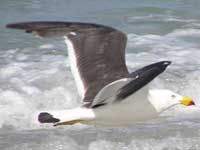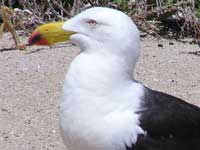Convidado
GF Ouro
- Entrou
- Jun 2, 2010
- Mensagens
- 5,086
- Gostos Recebidos
- 0
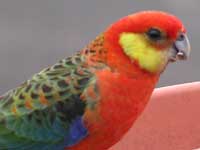
Western Rosella Found in the south west of WA, the male Western Rosella (above) has more distinct colours than the female which is mottled with green. The Eastern Rosella has more yellow on its back and underside, plus it has white cheeks. (Albany, WA) |
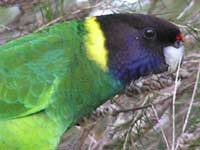
Australian Ringneck (Twenty-eight Parrot) There are several races of this parrot. The Twenty-Eight Parrot is named after its call. Another is the Port Lincoln Parrot which has a yellow belly and little red above its beak. (Pemberton, WA). |
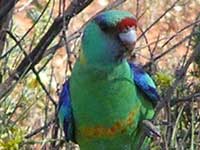
Australian Ringneck (Mallee Ringneck) Found in the arid parts of NSW, Victoria and Queensland, the Mallee Ringneck is distinguished from the other members of its family by its blue/green head and the orange on its chest. (Cobar, NSW) |
| � | ||
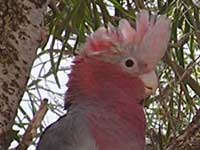
Galah The Galah is found throughout Australia and its numbers are increasing - most probably due to land clearing. |
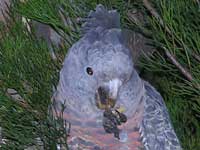
Gang-gang Cockatoo (female) Found in the forests of south-eastern Australia, the female is easily distinguished from the male (see right). |
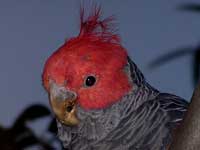
Gang-gang Cockatoo (male) Aboriginal legend has it that the Waratah received its crimson colour from the male Gang-gang Cockatoo. Its call resembles a very creaky door. (Leura, NSW) |
| � | ||
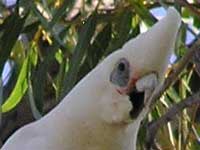
Little Corella Identified by the blue around its eyes, and lack of red on its chest, the Little Corella can be found throughout the semi-arid regions of Australia. (Hay, NSW) |
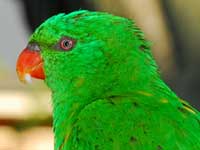
Scaly-breasted Lorikeet Found along the east coast and hinterland, it is the only Lorikeet that has a completely green head. Photo by Martin Kandilas |
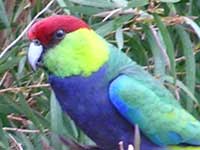
Red-capped Parrot Found in south-western Australia the Red-capped Parrot has a longer slimmer beak to enable it to get into gumnuts. (Albany, WA) |
| � | ||
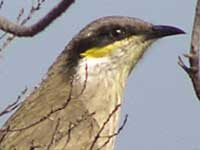
Singing Honeyeater Found throughout Australia except on the eastern seaboard. |
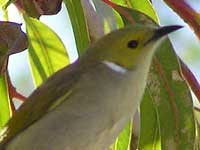
White-plumed Honeyeater Identified by the white plume on its neck, this honeyeater is found in most parts of Australia except the tropical north. (Quorn, SA) |
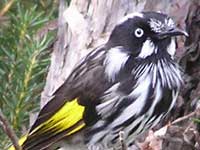
New Holland Honeyeater There are over 50 native birds called honeyeater. This one is distinguished from similar birds by the white around its eyes. It is found in south-eastern Australia and the south-west of WA. New Holland was an early name for Australia. (Leura, NSW) |
| � | ||
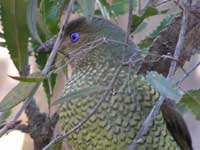
Satin Bowerbird (female) This stunning bird has the most vivid blue eyes. The male Satin Bowerbird is a shiny bluish black - thus its name. (Leura, NSW) |
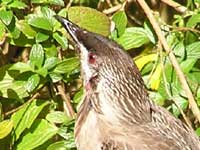
Red Wattlebird The Red Wattlebird has a distinctive pinkish red wattle near its ear. Its red eyes also differentiate it from other wattlebirds. The Red Wattlebird is found in the south of all mainland southern states. (Cheltenham, NSW) | |
| � | ||
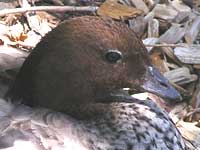
Australian Wood Duck Found mainly in south-eastern Australia, the male Australian Wood Duck has a solid darker-brown head; the female's head is a lighter brown with pale stripes. (Cowra, NSW) |
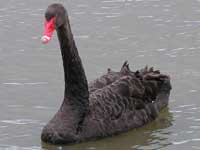
Black Swan Although the Black Swan is a symbol of Western Australia, it is found throughout the waterways of Australia. Its cygnets (baby swans) are grey. (Canberra, ACT) |
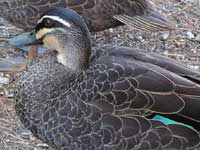
Pacific Black Duck The Pacific Black Duck is mainly found in eastern Australian waterways and the south-west of WA. The male and female are very similar. (Cheltenham, NSW) |
| � | ||
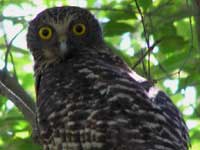
Powerful Owl The largest owl in Australia, and apparently the only owl that has the standard "hoot hoot" call. To hear its call, and learn much more | ||
| � | ||
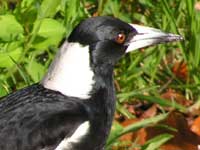
Australian Magpie (Black-backed Magpie) The Australian Magpie has the one of the most beautiful calls. Its white collar and red eyes distinguish it from other black birds. The Black-backed Magpie is found in eastern Australia. (Cheltenham, NSW) |
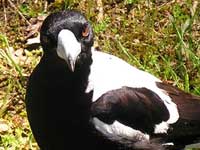
Australian Magpie (Western Magpie) The Western Magpie is found in south-western Australia. The female Australian Magpie's white collar is mottled grey. (Albany, WA) |
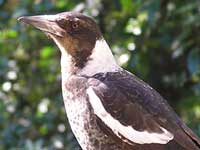
Australian Magpie (juvenile) The juvenile Australian Magpie has a grey mottled look, and its eyes are brown. It tends to follow its parents around screeching to be fed - even when it is nearly fully grown. (Cheltenham, NSW) |
Última edição:


